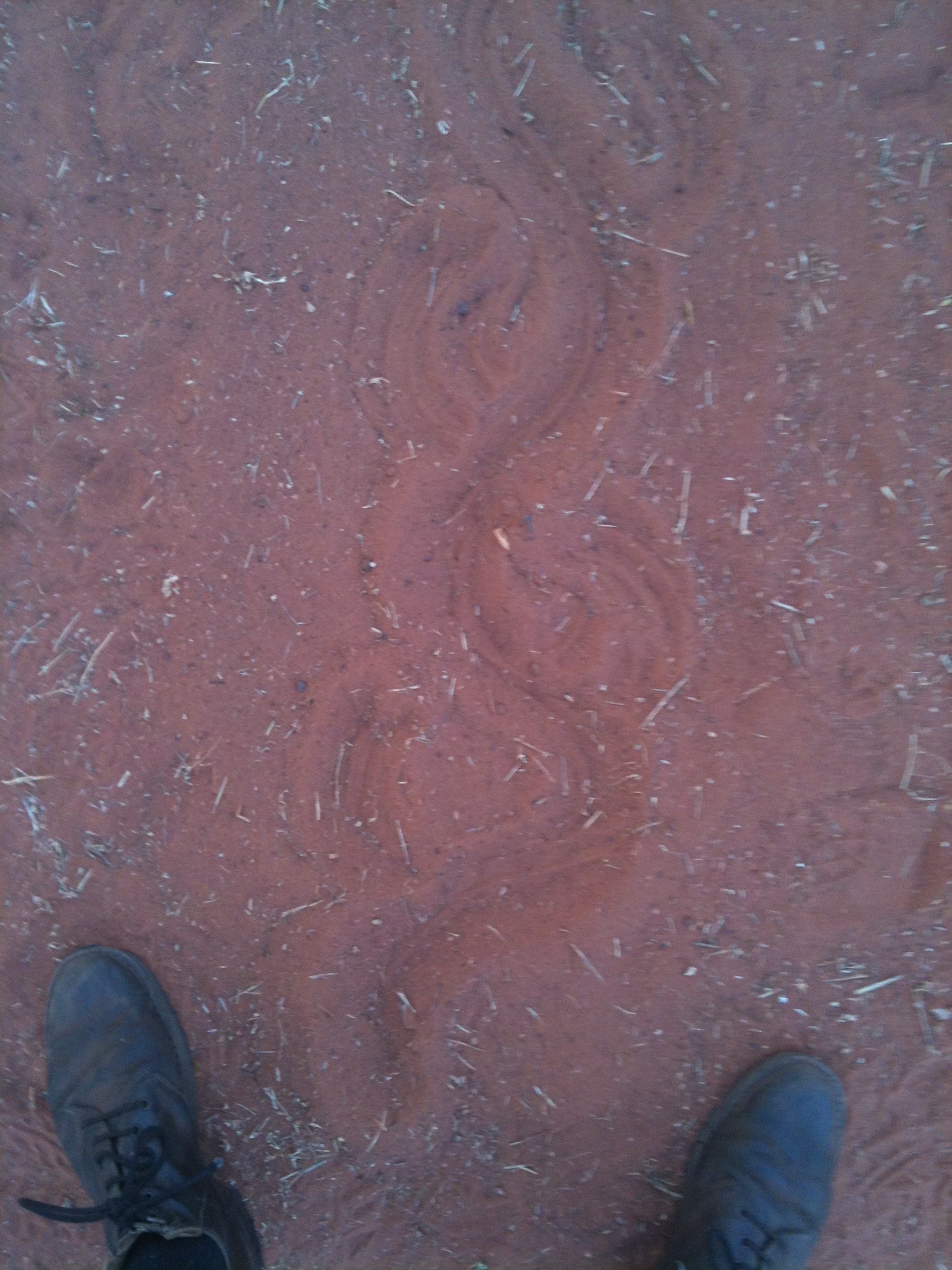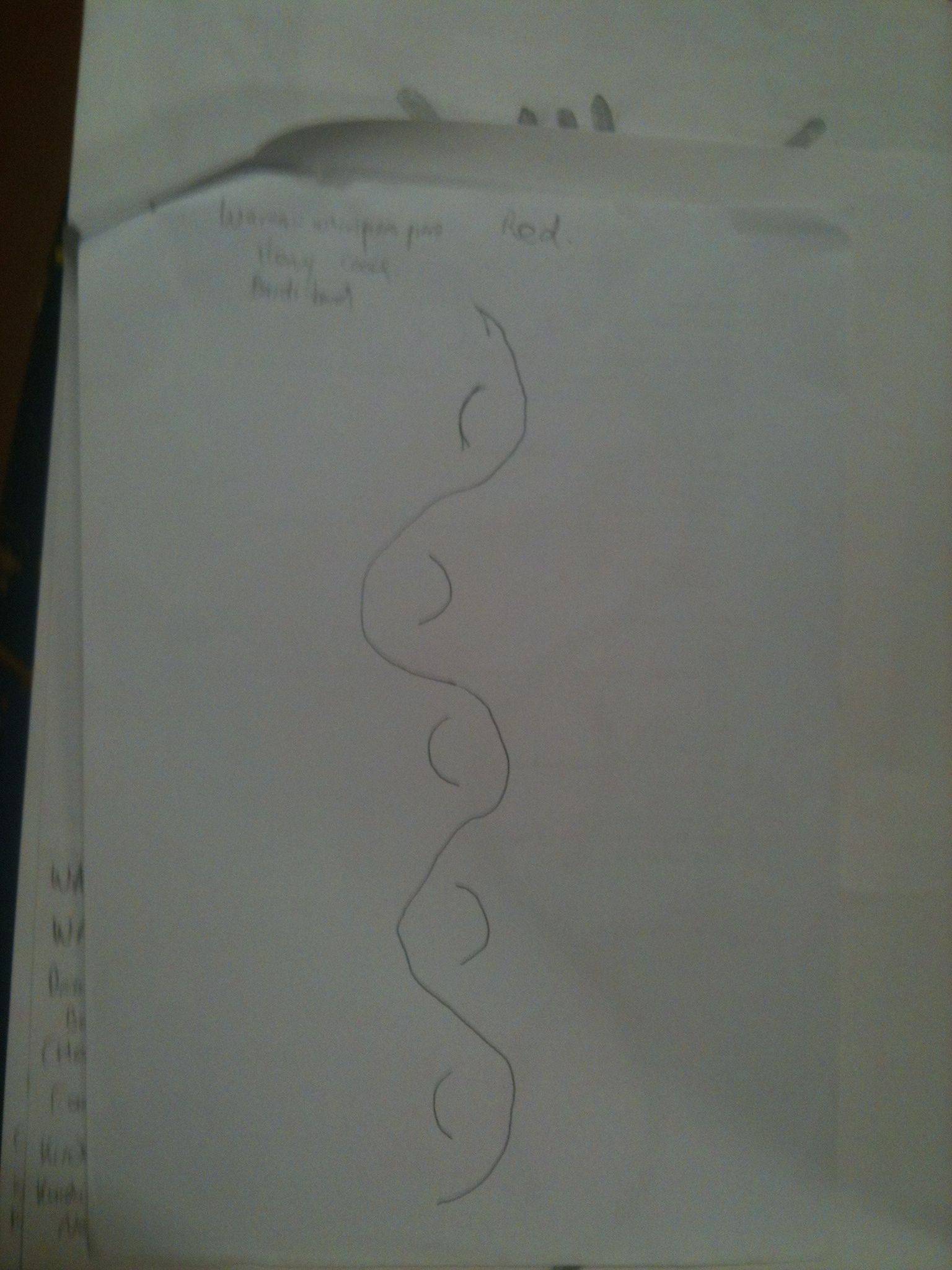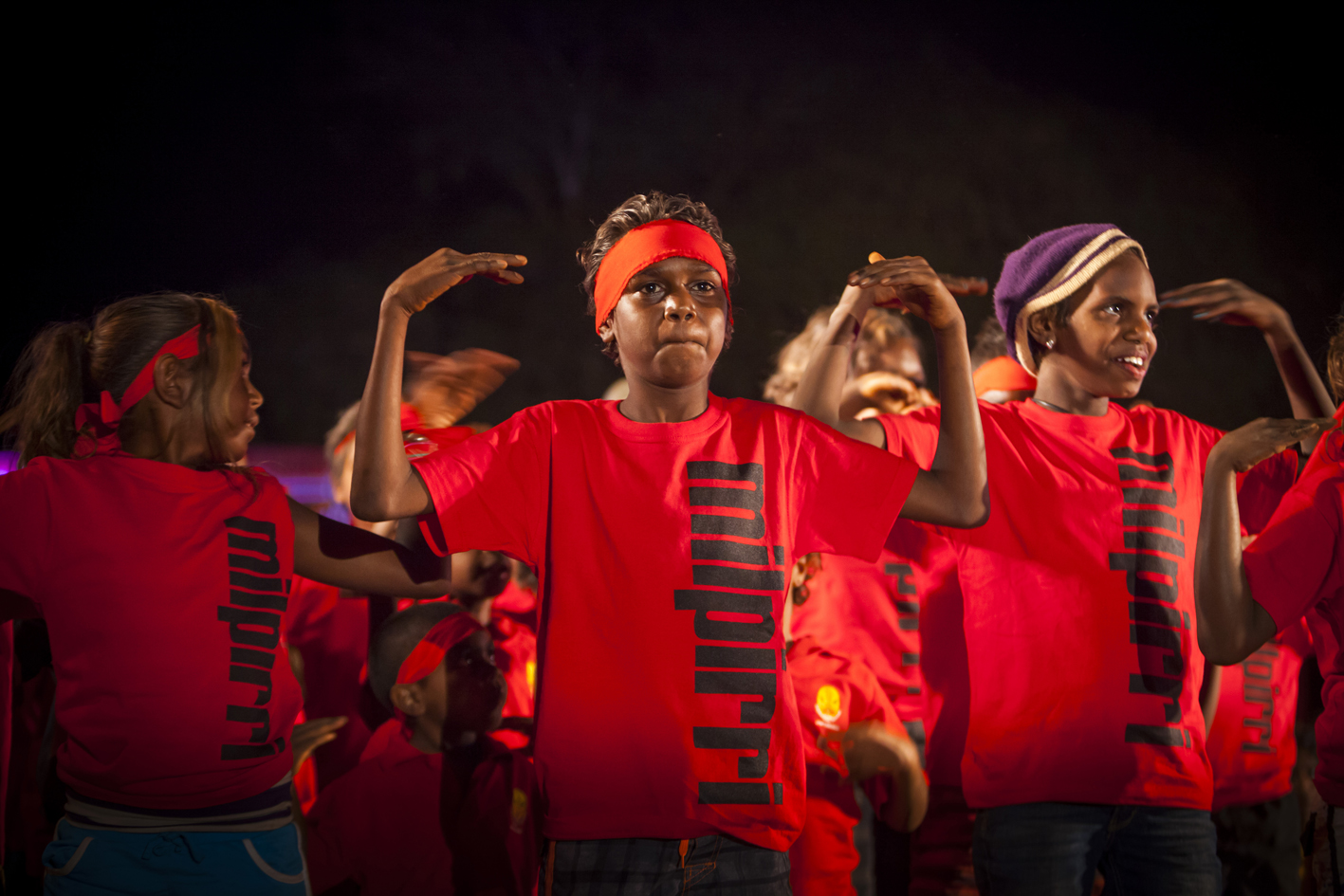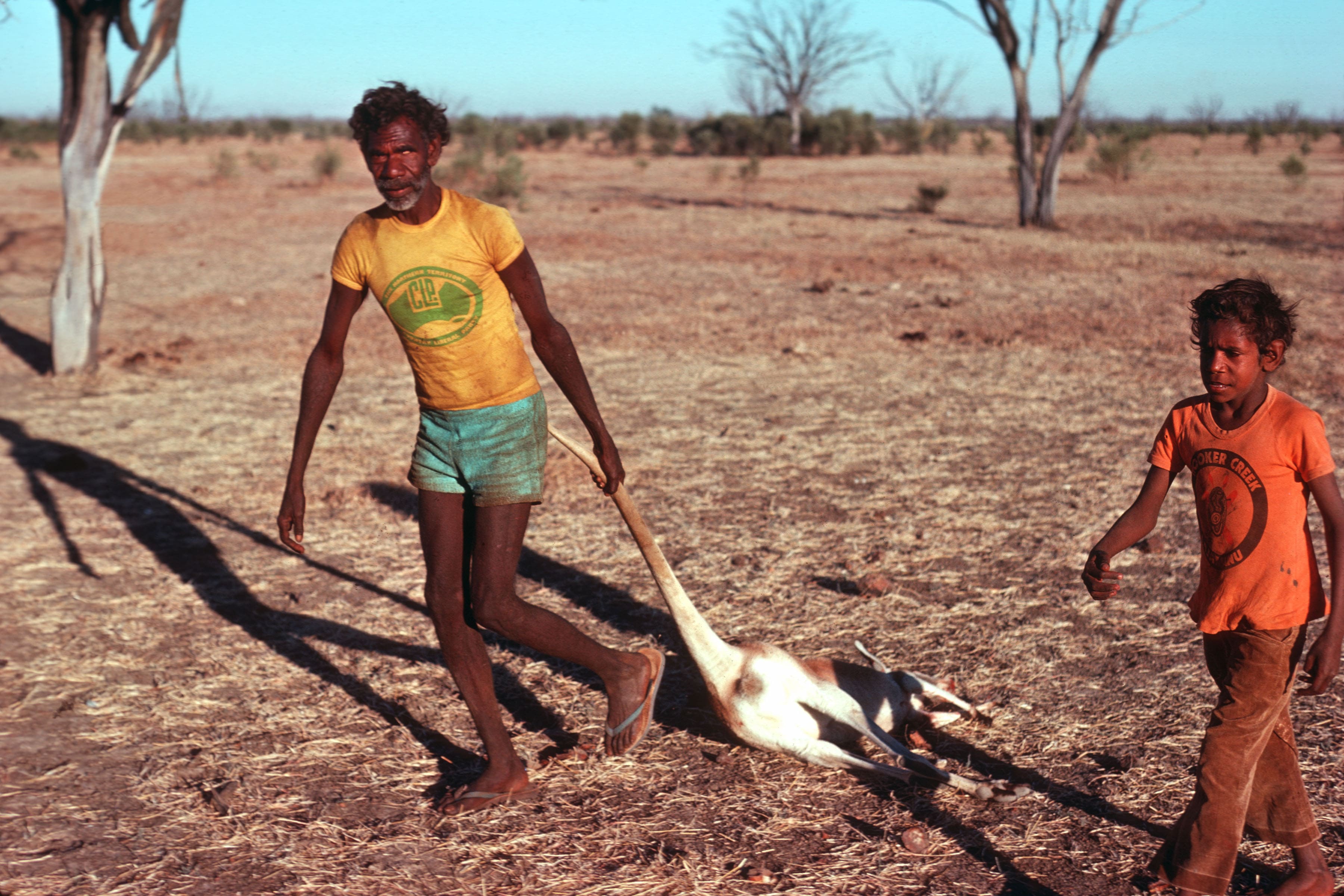Milpirri Banner - WARNA (Snake) - WARIPIRRAPIRRA
Dreaming Places and Design
This dreaming is referred to in Lajamanu as ‘Eastern Warna.’ The snake came from the east at Yuwunjuwita and passed through Purturlu (Mt Theo) going to Chilla Well. After that it went to Yumurrpa (Cave Hole Well) where there are two rock holes. He went into one rock hole and came out again. The snake is clearly shown in the design of the banner.
Purturlu (Mount Theo) where the warna (snake) passed - Map
Biology
Warna is the generic term for snake. Wari-pirra-pirra (aka Warlkirdi) is identified in the Warlpiri dictionary as the Yellow Faced Whipsnake (Demansia Psammophis Reticulate). However it is more likely to be Shines Whipsnake (Demansia Shinei) (Nic Gambold, pers. com 2018). Warlpiri say that the snake is very fast. It is also dangerous and can bite people.
See the Warna Waripirrapirra (shines whip snake) and see where it can be found in Australia - Photo / Map
Belonging to Skin Groups
Jupurrula, Jakamarra, Napurrurla and Nakamarra (Red Group)
Colour Groups
In the first Milpirri in 2005 the allocation of four colours were given to the sixteen Warlpiri skin names allowing a visible way of showing kinship relationships. The colour groups are seen in the banners and in Milpirri the performers are dressed and wear wristbands in one of the four colours in accordance to their kinship relationship.
Red (Jupurrula, Jakamarra, Napurrula, Nakamarra) Yellow (Japaljarri, Jungarrayi, Napaljarri, Nungarrayi), Green (Japangardi, Japanangka, Napangardi, Napanangka) and Blue (Jangala, Jampijinpa, Nangala, Nampijinpa).
Mothers tell of their child only wanting a red icy pole rather than a blue or green one because that is their colour. In Lajamanu School assemblies the students were sat in their colour groups. Begun as a way to illustrate how we are connected, and to give a visible sense of belonging, the colour system has become commonplace within the Lajamanu.
Drawn By
Henry Jakamarra Cook, September 2012.
Artist Profile
Henry Jakamarra Cook also known as Padi Padi was born around 1921. He is one of the oldest and most knowledgeable Warlpiri men alive. He was given his English name by Bob Hunterdale a long time ago at Mt Doreen station. Henry’s knowledge of country is exceptional. His bush skills are also first class, honed in his younger years when he lived in the desert around the Granites travelling from site to site and hunting with spear and boomerang. After leaving the desert he travelled as a stockman through the Northern Territory, Western Australia, New South Wales and Queensland. He is a master craftsman, painter and an accomplished hunter. Like many elders Henry has always loved being on country and has completed countless heritage surveys mapping Warlpiri lands to protect them from damage caused by mining exploration. He is a key member of Milpirri and has always been present on country visits with the school and IPA. He is also a larrikin and prone to singing traditional songs very early in the morning while out on country. He is always good fun to be with out bush. Henry Cook’s outstation is the Granites known asi or Yarturlu-yarturlu.
Family
Talk to members of the Stevenson family for more information.
About the Traditional Owners
Mark Jupurrula Stephenson is one of the Traditional Owners living in Lajamanu. His father, Jambu Larry Jakamarra, was born at a rock hole near Chilla Well on the waripirrapirra dreaming track.
Language stories
Warna yangka kujaka jamparli nyina, ngulaji ka pulya wapa pingka-jala. Kala warna, nyanungu-piya-yijala, kirrirdi wita kujaka nyina, kirrirdilki, wuurnpa-nyayirni, wirnpiwirnpi, waripirrapirraju, ngulaji ka kurlardapiya rurruny-nguna. Wakurturdu-nyayirni ka parnkanja-yani. Kulanganta ka nyiya yangka kurlardapiya wirnpirlinja-yani. Ngulanya waripirrapirraju.
That poisonous snake moves very slowly. Whereas that snake which is like it, one that is small and long and very thin, slender, the Yellow-faced Whipsnake, it speeds by like a spear. It moves very fast. You think it's a spear or something whistling by. That is the Yellow-faced Whip Snake.
Dictionary Source: Laughren, M., K. L. Hale, and Warlpiri Lexicology Group, 2005 Warlpiri-English Encyclopaedic Dictionary. (Accessed Via Kirrkirr Interface to Electronic Files.) University of Queensland.
Warlpiri Hand Signs
Warlpiri have an extensive set of sign language. See hand sign of snake below.
Further Reading
Read about Warlpiri snakes in the Warlpiri picture book called Warna-patu-kurlu by Ormal Gallagher Nangala, published in 2014 at the Yuendumu School. (English Translation at the end) - Download PDF






